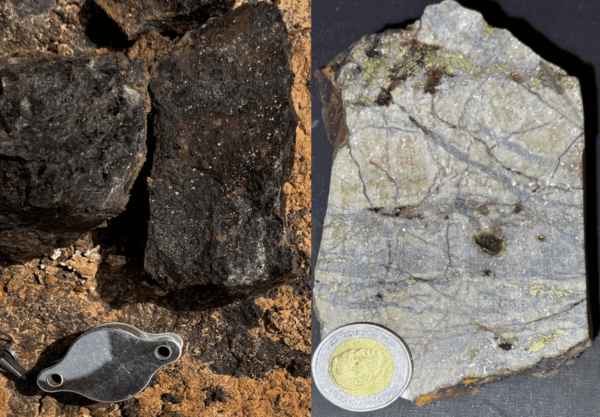VANCOUVER, British Columbia, March 10, 2025 (GLOBE NEWSWIRE) — The Port of Vancouver helped facilitate record volumes of Canadian trade in 2024, playing a crucial role connecting Canada to diverse markets across the world.
The Vancouver Fraser Port Authority’s annual statistics, released today, show a record 158 million metric tonnes (MMT) of cargo moved through the port in 2024, a 5% increase year-over-year that was led by strong performances in the auto, bulk and container sectors.
“The Port of Vancouver continues to drive Canadian prosperity—enabling seamless trade with up to 170 nations across the globe and supporting countless well-paying family jobs across the nation,” said Peter Xotta, President and CEO of the port authority, the federal agency that enables trade through the Port of Vancouver while protecting the environment. “The Port of Vancouver stands ready to support efforts to diversify Canada’s international trade and build a strong, resilient national economy. We will continue partnering with governments and industry to plan and deliver the long-term capacity needed to support trade through the gateway—in support of all Canadians.”
Almost as much cargo moved through the Port of Vancouver in 2024 as was handled by Canada’s next five largest ports combined, and approximately 80% of the international trade it enabled was Canadian trade with countries other than the U.S.
“The strength of our gateway shone bright last year with the port moving record volumes despite a challenging environment that included numerous disruptions,” Xotta said. “I want to acknowledge port operators and our supply chain partners for their unwavering dedication to serving Canada and its trade needs—in 2024 our supply chain flexed but never broke.”
Challenges faced by the port community in 2024 included impacts from climate change and extreme weather such as wildfires, increasing local and global geopolitical tensions, and labour disputes.
The bulk sector’s strong performance led the way, with volumes up 8% to 117.9 MMT, including:
- Record liquid bulk exports, up 203% to 17.1 MMT, as the expanded Trans Mountain pipeline and Westridge terminal unlocked new markets across Asia for Canadian petroleum products. Petroleum exports through the port almost quadrupled to 15 MMT in 2024, while canola oil exports almost doubled to 0.9 MMT.
- Near-record exports of Canadian grain, up 1% to 29 MMT, as port operators and favourable weather meant Canadian farmers were able to serve strong international demand for their crops. Fertilizer (down 4% to 12 MMT) and coal (down 2% to 42 MMT) exports remained stable.
“Trans Mountain’s expansion coming into operation last May was a significant milestone for Canada and the port—adding export capacity and opening up new opportunities for Canadian producers,” Xotta said. “More than half of crude oil exports through the port since May went to Indo-Pacific markets. Our Active Vessel Traffic Management program helped support a safe and seamless ramp-up of tanker traffic, while ensuring the reliability and fluidity of other vital port sectors such as grain weren’t impacted.”
A record of almost 470,000 vehicles were handled by auto terminals in 2024, as imports through the port helped meet strong Canadian consumer demand for new vehicles. Nearly 100% of Canada’s Asian-manufactured vehicle imports arrive via the Port of Vancouver, with recent work to optimize the Annacis Auto Terminal increasing capacity by one-third and ensuring the port is well-placed to handle market growth.
The Port of Vancouver handles North America’s most diversified range of cargo, and in 2024 the top trading partners that moved goods through the port were China (46 MMT), Japan (19 MMT) and South Korea (18 MMT). Trade to the U.S. through the port increased to 7% of total cargo moved (10 MMT), driven by increased petroleum exports via Westridge terminal.
Container trade recovered throughout 2024, with the Port of Vancouver returning to pre-pandemic growth trends following several tumultuous years that included a pandemic-era surge in consumer demand and numerous supply chain disruptions. The port’s four container terminals handled 3.47 million 20-foot equivalent units (or TEUs) in 2024—up 11% compared to 2023 and 2% compared to 2019.
Imports (laden inbound) grew 14%, as retailers restocked inventories and volumes shifted to the west coast due to disruptions to the Red Sea trade route. Exports (laden outbound) grew 5% as Canadian businesses continued to rely on containers to ship their goods to markets across the globe. Containerized exports through the port went to 128 different countries in 2024.
“Containerized trade at the Port of Vancouver approached record levels in 2024, with terminals handling the highest volume ever outside of the pandemic,” Xotta said. “Containerized trade continues to play an increasingly important role connecting Canadians and our businesses to markets across the world, moving everything from imports of vehicle parts, food and consumer electronics to exports of B.C. seafood and Prairie specialty grain.”
Foreign breakbulk volumes were down 2% in 2024, to 1.9 MMT, with a 7% increase in metal imports offset by 13% decrease in exports of forestry products as wood pulp continued to shift to being shipped in containers.
The Port of Vancouver’s cruise sector experienced another successful season in 2024, with passenger visits to the Canada Place cruise terminal hitting a record 1.33 million. This was 7% higher than the previous record for passenger visits—1.24 million set in 2023.
“We continue to collaborate with industry, government and destination partners to support Vancouver’s booming cruise sector and ensure Canada Place remains a premier homeport supporting the vibrant Alaska market—supporting jobs, businesses and tourism throughout the region,” Xotta said. “We were incredibly proud to partner with U.S. border services last year to introduce Canadian-first facial biometric scanning technology at the terminal, bolstering the terminal’s ability to seamlessly handle high numbers of cruise passengers while enhancing passenger experience and security.”
Key projects and milestones at the Port of Vancouver in 2024 include:
- Expansion of Active Vessel Traffic Management’s centralized scheduling system in First Narrows to enhance transit safety, fluidity and supply chain visibility for more than 5,000 commercial ship movements in Burrard Inlet every year
- Facial biometric technology at the Canada Place cruise terminal that helped reduce border processing times for U.S. and Canadian passengers boarding a ship by 94%, from 2-3 minutes to about 10 seconds
- Construction starting on the Holdom overpass—a new four-lane overpass that will improve traffic flow, safety and trade—in partnership with the City of Burnaby, CN and the Government of Canada
- Densification and modernization at Global Container Terminal’s Vanterm terminal increased its container handling capacity, enabled larger container ships to berth and reduced its greenhouse gas emissions
- Trans Mountain’s expanded pipeline and Westridge terminal came into operation in May, significantly increasing capacity to export Canadian petroleum overseas
- Cascadia bulk grain export terminal, owned by Viterra and Richardson, expanded its railyard to increase the track by approximately 1,500m and allow for assembly of 2,600m-long trains
- Pacific Coast Terminals, which handles bulk commodity trade, completed an expansion of its glycol facilities, increasing its export capacity by more than 50% to 1.25 MMT per year
- The port authority submitted a Species at Risk Act-compliant Fisheries Act Authorization for Roberts Bank Terminal 2 in October, an important step towards delivering the trade capacity Canada requires through a new container terminal in Delta.
- Port operators continued to improve the sustainability of moving goods through the gateway, including the port’s first electric tugs being launched by SAAM Towage in April and Seaspan Energy getting accreditation to provide LNG bunkering services in November
- The port authority signed a memorandum of understanding with the Hamburg Port Authority in Germany to collaborate on port priorities including maritime decarbonization, safety, digital practices and new technology, and cruise operations
- Viterra’s Pacific Terminal celebrated the 100-year anniversary since the first vessel was loaded at the bulk grain export terminal
- The port authority-led ECHO program celebrated its 10th anniversary of coordinating measures to protect at-risk whales off the coast of B.C. More than 70 marine transportation organizations participated in 2024, helping to reduce underwater noise by up to 50% in key areas for critically endangered southern resident killer whales.
Backgrounder
- Overall cargo moved by Port of Vancouver terminals was a record 158 MMT, up 5% compared to the previous record of 150 MMT set in 2023. This included record international trade, up 11% to 132 MMT.
- Liquid bulk increased 123% to 21.9 MMT, with petroleum products growing 153% to 19.3 MMT and canola oil exports up 74% to 0.9 MMT. Petroleum exports were up 282% to 15 MMT.
- Dry bulk decreased 4% to 96.0 MMT, with increases in bulk grain (1% up to 29.0 MMT) and sulphur (8% up to 3.3 MMT), offset by decreased in coal (2% down to 41.9 MMT) and potash (8% down to 8.2 MMT)
- Container volumes at the Port of Vancouver increased 11% to 3.5 million twenty-foot equivalent units, or TEU. Imports (laden inbound) increased 14% to 1.8 million TEU, while exports (laden outbound) increased 5% to 794,724 TEU. Empty containers increased 11% to 857,343 TEU.
- Auto volumes increased 3% to 469,000 units
- Cruise vessel calls decreased 2% to 327, while passenger visits increased 7% to a record 1.33 million
- Breakbulk volumes decreased 18% to 15.3 MMT, including basic metals volumes growing (up 9% to 0.9 MMT) and logs traffic declining (down 29% to 7.7 MMT). Foreign breakbulk was 1.9 MMT, down 2%.
About the Vancouver Fraser Port Authority and the Port of Vancouver
The Vancouver Fraser Port Authority is the arm’s-length federal agency that stewards the lands and waters that make up the Port of Vancouver, alongside the enduring stewardship of First Nations. As a Canada Port Authority, it is accountable to the federal Minister of Transport and operates pursuant to the Canada Marine Act. The Vancouver Fraser Port Authority’s purpose is to enable Canada’s trade through the Port of Vancouver by being reliable and innovative, while protecting the environment. The port authority is structured as a non-share corporation, is financially self-sufficient and does not rely on tax dollars for operations. Revenues come from port terminals and tenants who lease port lands, and from port users who pay various fees such as harbour dues. Profits are reinvested in port infrastructure.
The Port of Vancouver is Canada’s gateway to diverse markets, enabling trade of approximately $300 billion with up to 170 countries every year. Located on the southwest coast of British Columbia in Canada, its 29 major deep-water terminals and more than 1,000 tenants move goods and people across five sectors (auto, bulk, breakbulk, container and cruise). The port is made up of approximately 16,000 ha of water, 1,500 ha of land and 350 km of shoreline, extending across Burrard Inlet, Fraser River and Roberts Bank. It borders 16 municipalities and intersects the traditional territories and treaty lands of more than 35 Coast Salish First Nations. The Port of Vancouver is the fourth largest port in North America by tonnage and handles almost as much cargo as Canada’s next five largest ports combined. Port operations sustain more than 132,000 supply chain and related jobs across Canada.
Contact:
Alex Munro, Media Relations
604.340.8617




